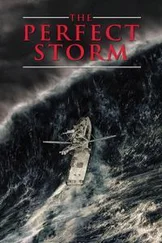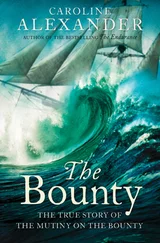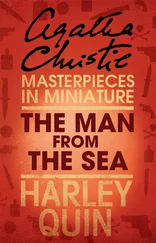It helped, of course, that Billy was good at it. He had an uncanny ability to find fish, a deep sense of where they were. “It was weird—it was like he had radar,” says Jodi. “He was one of the few guys who could go out and catch fish all the time. Everyone always wanted to fish with him ‘cause he always made money.” Tyne’s very first trip was on the Andrea Gail, and after that he switched over to the Linnea C., owned by a man named Warren Cannon. Tyne and Cannon became close friends and, for eight years, Cannon taught him everything he knew. After his long apprenticeship Tyne decided to go out on his own, and he began to take out the Haddit — “that fuckin’ Clorox bottle,” as Charlie Reed called it. (It was a fiberglass boat) By this time Tyne was fully hooked; the strains of being at sea had split up his marriage, but he still wouldn’t give it up. He moved to Florida to be closer to his ex-wife and daughters, and fished harder than ever.
Every summer Tyne’s two daughters, Erica and Billie Jo, went up to Gloucester to visit their grandparents, and Tyne would stop over between trips to see them. He also kept in touch with Charlie Reed, and when Reed stepped down from the Andrea Gail, Billy’s name came up. Brown offered him a site as skipper of the boat and one-third of the crew share. It was a good deal; a man like Tyne could clear a hundred thousand a year that way. He accepted. In the mean time, Reed got a job on a ninety-foot steel dragger called the Corey Pride. He’d make less money, but he’d spend more time at home. “I just couldn’t get into the gypsy life anymore,” Reed says. “Movin around, not comin’ home three months at a time —I got by, but it was hell on my wife. And I thought I’d made enough to keep all my kids in school. I hadn’t, but I thought I had.”
THE Andrea Gail rides out to the fishing grounds on the back of a high pressure system that comes bulging out of Canada. The winds are out of the northwest and the skies are a deep sharp blue. These are the prevailing winds for the area; they are the reason people say “Down East” when they refer to northeast Maine. Schooners that hauled eastward downwind could be in St. John’s or Halifax within twenty-four hours. A 365-horsepower diesel engine makes the effect less pronounced, but heading out is still a shorter trip than heading in. By September 26 or 27, Billy Tyne’s around 42 north and 49 west, about 300 miles off the tip of Newfoundland, in a part of the Grand Banks known as the “Tail.” Canadian National Waters, which extend two hundred miles offshore, exclude foreign boats from most of the Banks, but two small sections protrude to the northeast and southeast: the Nose and the Tail. Sword boats patrol an arc hinging on a spot around 50 degrees west and 44 degrees north. Inside that arc are the broad, fertile submarine plains of the Grand Banks, off-limits to all but Canadian boats and licensed foreign boats. Outside that arc are thousands of legal swordfish that might conceivably be fooled by a mackerel hung on a big steel hook.
Swordfish are not gentle animals. They swim through schools of fish slashing wildly with their swords, trying to eviscerate as many as possible; then they feast. Swordfish have attacked boats, pulled fishermen to their deaths, slashed fishermen on deck. The scientific name for swordfish is Xiphias gladius; the first word means “sword” in Greek and the second word means “sword” in Latin. “The scientist who named it was evidently impressed by the fact that it had a sword,” as one guidebook says.
The sword, which is a bony extension of the upper jaw, is deadly sharp on the sides and can grow to a length of four or five feet. Backed up by five hundred pounds of sleek, muscular fish, the weapon can do quite a bit of damage. Swordfish have been known to drive their swords right through the hulls of boats. Usually this doesn’t happen unless the fish has been hooked or harpooned, but in the nineteenth century a swordfish attacked a clipper ship for no apparent reason. The ship was so badly damaged that the owner applied to his insurer for compensation, and the whole affair wound up in court.
Grand Banks swordfish spawn in the Caribbean and then edge northward during the summer months, heading for the cold, protein-rich waters off Newfoundland. During the daylight hours the fish work their way down the water column to depths of 3,000 feet, chasing squid, hake, cod, butterfish, bluefish, mackerel, menhaden, and bonito, and at night they follow their prey back up to the surface. Their young hatch with scales and teeth, but no sword, and have been described as “wistful-looking.” Although all manner of fish feed on larval swordfish, only mako, sperm whale, and killer whale attack them when they’re fully grown. Mature swordfish are considered to be one of the most dangerous game fish in the world and have been known to fight non-stop for three or four hours. They have sunk small boats in their struggles. Sport fishermen need live bait on heavy steel hooks that are secured to 500-pound test steel wire or chain to catch sword-fish; they also need a “numbing club” on board to beat the fish senseless. Commercial fishermen, who are in the business of avoiding the thrill of fishing, use different methods entirely. They hang a thousand baited hooks on forty miles of monofilament and then crawl into bed to get some sleep.
Bob Brown doesn’t know when Billy makes his first set because Billy hates talking to him on the radio. He’s been known to leave messages with Linda Greenlaw in order not to talk to Bob Brown; he’s been known to fake static on the single sideband. But it’s reasonable to assume that on the night of September 27th, Tyne’s making his first set of the trip. The boat’s outriggers are boomed out and two steel plates, known as “birds,” hang by chain down into the water to provide stability. The ocean has already settled into the galloping darkness of mid-autumn, and the wind has swung around to the southeast. The surface of the ocean is cross-hatched with changing weather.
Baiting has all the glamour of a factory shift and considerably more of the danger. The line is spooled on a big Lindegren drum that sits under the shelter of the whaleback on the port side of the boat. It crosses diagonally over the deck, passes through an overhead block, and then bends straight back toward the stern. A steel ring guides it over the rail and into the water. That’s where the baiters stand. There’s a bait table on top of the stern rail—basically a wooden well with squid and mackerel in it—and a leader cart on either side. The leader carts are small drums spooled with hundreds of lengths of seven-fathom line, called gangions. Each gan gion has a #10 hook at one end and a stainless steel snap on the other.
The baiter reaches behind him and takes a gangion from his back-up man, who’s peeling them off the leader cart one at a time. The baiter impales a squid or mackerel onto the hook, snaps the gangion onto the mainline, and throws the whole thing over the side. The hook is easily big enough to pass through a man’s hand, and if it catches some part of the baiter’s body or clothing, he goes over the side with it. For this reason, baiters have complete control over the hook; no one handles the gangion while they’re on it. There’s also a knife holstered to the baiting table. A baiter might, conceivably, grab it fast enough to sever the line before going over.
Since swordfish feed at night, each hook is also fixed with a Cylume lightstick that illuminates the bait. Cylumes are cigar-sized plastic tubes with phosphorescent chemicals inside them that activate when the tube is snapped in half. They cost a dollar apiece, and a sword boat might go through five thousand in a trip. The hooks and lightsticks are spaced about thirty feet apart, but the exact interval is determined by the speed of the boat. If the captain wants to fish the hooks closer together, he slows down; if he wants to spread them apart, he speeds up. The typical speed for setting-out on the Grand Banks is six or seven knots. At that speed it takes about four hours to set out thirty miles of line.
Читать дальше












